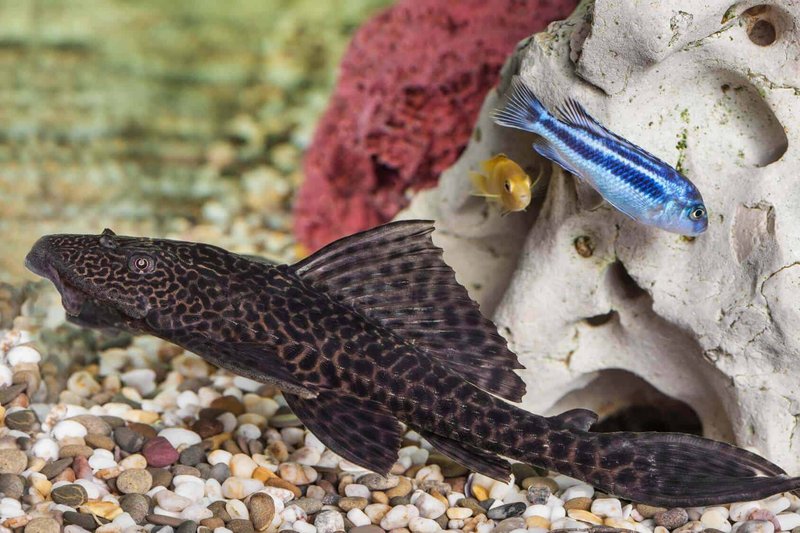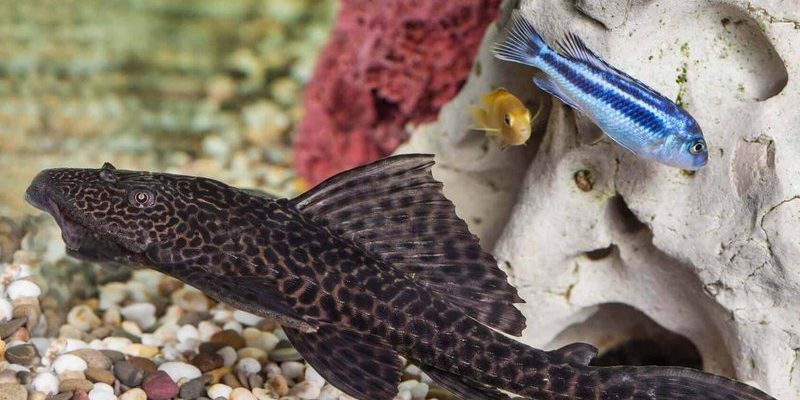
Plecos are known for their scrubber-like mouths, which help keep your tank clean by munching on algae. But their size, temperament, and dietary needs can vary widely depending on the species. So, what should you know about their compatibility with other fish? Let’s dig in over a nice cup of coffee and see if we can clarify this for you!
Understanding Plecostomus Species
Before we dive into compatibility, it’s essential to understand that “Plecostomus” isn’t a one-size-fits-all type of fish. There are various species, each with different characteristics. The most common ones are the Common Pleco, Bristlenose Pleco, and the Clown Pleco.
– Common Pleco: They can grow quite large—up to 24 inches! Because of their size and territorial nature, they can be tricky to house with smaller fish.
– Bristlenose Pleco: A smaller option, usually reaching about 5 inches, they are typically more peaceful and can coexist with various tank mates.
– Clown Pleco: This little dude stays around 4–5 inches and is also known for being less aggressive.
Knowing which type of Pleco you’re dealing with is the first step to ensuring you pick the right companions.
General Compatibility Guidelines
So, can Plecostomus live with other fish? The short answer is yes, but it really depends on the specific type of Pleco and the other fish in the tank. Here are some general guidelines:
– Tank Size Matters: A larger tank allows for more swimming space and reduces territorial aggression. For a Common Pleco, a minimum of 75 gallons is recommended.
– Temperament: Generally, Plecos are peaceful, but they can get aggressive if they feel threatened or if their space is encroached upon.
– Size and Species: Larger or more aggressive fish can bully smaller Plecos, while smaller fish might get harassed by Plecos looking for territory.
You might be wondering what that looks like in practice. Picture a communal tank: if you have tiny Tetras swimming around, a large Pleco might see them as intruders and become more territorial. It’s crucial to consider both size and personality when planning your tank.
Best Tank Mates for Plecostomus
When selecting fish to live with your Plecostomus, look for species that are known for their calm demeanor and compatible size. Here are some top choices:
- Angelfish: These graceful swimmers can usually coexist peacefully with Plecos, especially Bristlenoses.
- Guppies: Their small size and peaceful nature make them perfect companions for smaller Plecos.
- Danios: These active little swimmers are quick and can handle a Pleco’s presence without issues.
- Corydoras Catfish: They stay near the bottom of the tank and won’t interfere with a Pleco’s territory.
- Rainbowfish: Their colorful and lively nature means they’re usually active enough to avoid trouble.
Remember, it’s not just about compatibility on paper. Always observe your fish during the first few days to ensure everyone settles in nicely.
Fish to Avoid with Plecostomus
Not all fish will play nice with Plecos, and knowing which ones to avoid can save you a lot of headaches. Here are some common fish that generally don’t mix well:
- Aggressive Cichlids: Species like the African Cichlid can be territorial and may see Plecos as invaders.
- Small Tetras: While some smaller Tetras can coexist, larger or more aggressive ones might bully your Pleco.
- Giant Gouramis: These fish are known for being territorial and can pose a threat to smaller Plecos.
- Barbs: Certain types can be nippy, causing stress to your Plecostomus.
If you’re in doubt, it’s better to err on the side of caution and choose tank mates that are known to be non-aggressive.
Feeding Considerations with Other Fish
Another factor to keep in mind is diet. Plecostomus primarily thrive on algae, but they also enjoy a varied diet that includes:
– Vegetables: Zucchini, cucumber, and spinach are favorites.
– Algae Wafers: Specially made for Plecos, these can supplement their diet nicely.
– Sinking Pellets: Ensure that the food sinks to reach the Plecos, especially in a mixed tank where other fish might get to it first.
This is especially important if you’re keeping them with fish that have different dietary needs. You won’t want your Pleco to miss out on meals because other fish are hogging the food. Providing various feeding spots can help curb competition.
Behavioral Observations to Make
Once you’ve set up your Pleco’s home with its newfound friends, keep an eye out for any signs of stress or aggression. Here are a few behaviors to watch for:
– Hiding: If your Pleco is spending excessive time hiding, it may be feeling threatened by other tank mates.
– Fin Nipping: If you notice nipping or aggressive behavior from either party, it’s time to act.
– Territorial Displays: Look out for posturing or physical aggression. If a Pleco feels its space is invaded, it may become defensive.
If you spot any of these signs, consider re-evaluating the tank mates or adjusting the environment to create more hiding spaces or territories.
In summary, Plecostomus can live with other fish, but it’s all about choosing the right companions and understanding their unique needs. Whether you have a Common Pleco or a sweet Bristlenose, keeping in mind their size, temperament, and diet will help create a balanced environment for all your aquatic friends.
So, as you plan your tank, think of it like hosting a party. You want to invite guests who will get along, enjoy the food, and feel comfortable in the space you’ve created. With the right mix, your aquarium can thrive and be a beautiful underwater world for everyone involved. Happy fishkeeping!

